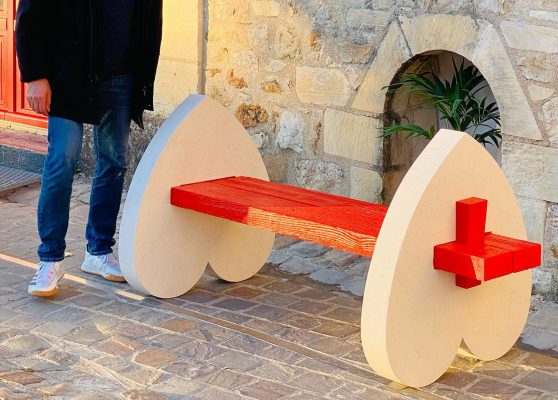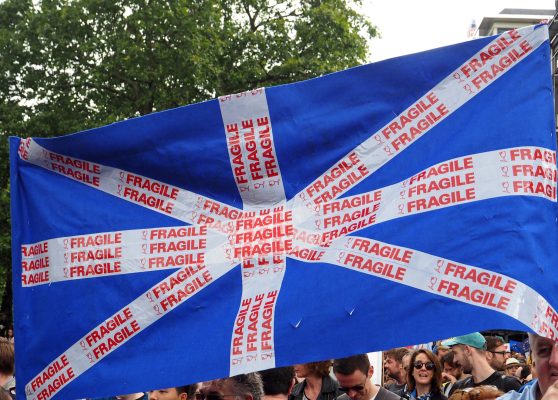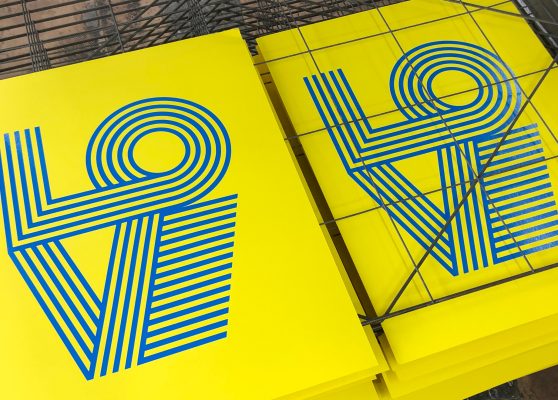Interview
Interview: Sarah Boris
In conversation with artist and designer Sarah Boris on design, art and the desire to ‘celebrate what we have in common rather than what divides us’.
What was your route into art and design, and how do you see your role changing? Your work for instance is very varied, and pluralistic, working across lots of areas. Do you see or have experienced limitations in your journey through art and design?
I’m a multi-disciplinary artist and designer. I grew up in the US until the age of 6 where I loved the arts and craft classes. Whenever I paint, I can get caught smiling in the act. It’s my happy state and place. I lose sense of time. I think from then on it was a given I would pursue a creative career. It was first out of passion and progressively, passion and work came together – I am really grateful that both can sit well together in my everyday practice.
There are endless possibilities in a creative career and a lot of the skills learned along the way are transferable to other area of work. For that reason, I always admire companies who value artists and creative teams, even within a more corporate remit. It’s about feeding each other different outlooks and ways of looking at the world.
At the moment I am working with people in Japan, Korea, Norway, UK and I’m running a workshop this week in Dublin, Ireland. A creative career can be truly international and to some extent, borderless.
I pursued a creative career and still to this day, no two days are the same – you never know what tomorrow will bring. From receiving an email to go and speak at a festival in Barcelona to an invitation for a printmaking residency in London, it’s really exciting. I like that there is no routine. My output is varied from paintings, sculpture, screen printed editions, rugs, benches, and a lot more. I find it important to not limit myself to one form and I am keen to explore further textile and sculpture alongside my paper- and canvas-based artworks.
I feel the only limitations are the ones we set ourselves. There are limitations set to some extent by the way people define their practice, a lot of gatekeeping and pigeon-holing, but we are all free to define ourselves and our remit, hence why I have redefined my practice and job titles since setting up my independent studio in 2015. I see my art and design practice working in tandem as a virtuous circle. I found a renewed passion for my design commissions since I have been doing more of my artworks and personal projects. It’s injected a new energy and both feed each other.
Your work has a very optimistic character. For example, simple epigrams and words, HUG, SUN and LOVE during Covid-19 and made into a limited edition artwork. Where does your interest in words come from, and what do you see as the power of words?
I’m very curious about words in general. Writing them, creating a typographic artwork, and releasing an edition or book with the words is a way to amplify them. My interest in words started when I studied literature during my A levels. I also love word-based art and hold as a reference, artists like Barbar Kruger, Jenny Holzer, Jeremy Deller, Ed Ruscha to name a few. I like the immediacy of communicating an emotion with a single word and how someone can adopt it and re-contextualise it. More recently I have been creating custom lettering for my word-based art but it means the process is much slower. I made many iterations of the word LOVE before being satisfied with the typographic composition. I was lucky that I have a few friends who are type designers and lent me their expert eyes at different stages. The ‘LOVE ULTRA’ screenprinted edition is available at https://www.nellyduff.com/gallery/sarah-boris/love-ultra
You were raised in several cities. How has this influenced your art and design output?
It’s had an influence on me. Living in three different countries with three different cultures means that I have in some ways absorbed all these. The first year of moving from the US to France was quite tough at school so I think it’s made me more resilient.
I realise that some influences from growing up in the US are coming out in my work at the moment, mainly around pop artworks I have been making. We lived in front of a candy shop in the US and I would run across the street and stare for ages at all the candy packaging. I think these big chunky, colourful letters have seeped into my work in some ways.
I sometimes jumble up words between US and UK English. More recently, with Brexit, I have felt an accrued sense of questioning my identity and sense of belonging. I feel extremely privileged to be able to speak two languages and be ‘allowed’ to live in several countries. My identity quest translates into my artworks and my exploration of language in my work. Two language projects were born from my experience (dismay) of Brexit and my desire to celebrate what we have in common rather than what divides us. I was on a bus in London, speaking French on a call and a man shouted at me: ‘Go back to your country if you can’t speak our language’, little did he know I could speak his language and that his country is also my country. I did not respond but instead it prompted me to explore what we have in common in both languages French and English. I wish to celebrate and amplify this.
How do you see the role of an artist designer to political, social and environmental changes and developments?
I see so many artists and designers taking a stance and it feels stronger than ever or perhaps I am just noticing it more as a lot of my work responds to political and environmental events (although not solely). My work was exhibited several times in political exhibitions such as ‘Man Made Disaster: How Patriarchy is Ruining the Planet’, ‘Change Everything’, ‘Hope to Nope’ at the Design Museum. I feel we can play a role and open discussions on these topics. Whenever I meet students I also talk about the importance of voting and deciding on their future. I feel we play a role both in terms of the work we agree to take on, the work we produce, the subjects we study and how we share and connect these in a relevant way. One of the books I made titled ‘Global Warming Anyone’ ended up being acquired by a Green MP at the European Parliament in Brussels. They purchased several copies to give out to other MPs. I never thought my work would enter a political arena in this way but it made me realise the importance of pursuing these projects. The book is also part of the fine art collection of the New York Book Arts Centre. My Fragile UK flag (exhibited at the Design Museum) and featured in the latest ISTD book on protest is now available as a limited art edition signed and numbered at https://www.nellyduff.com/gallery/sarah-boris/fragile-uk
What advice do you have for people entering the creative industries, and indeed those in it already? Everyone works in a slightly different way, and it would be interesting to get your perspective on your process and how you maintain inspiration?
I like to bring a performative and participatory dimension into my artworks. For my first solo exhibition ‘Le Théâtre Graphique’ in Le Havre, France in 2015, I created a fictional studio in which I based myself for the duration of the exhibition. Each part of the workshop space presented different tools as well as references and artworks. To attract visitors, I placed an ad in the local newspaper inviting them to send me queries and come in for consultations. I’d love to repeat the experience sometime. It was inspiring to be on site and interact with visitors. Alongside this I installed a confessional where people could talk about their creative doubts. There was a theatrical dimension to the exhibition which was filmed by Arte TV.
For a more recent exhibition in 2021 as part of ‘Les Temps d’Art’ a contemporary art festival in France, I imagined a narrative which included a collaboration with a Saumur based winemaker. I also created an edition of heart-shaped benches which were exhibited in the city. I’d love to manufacture the ‘lovers’ bench’ so they could be installed in other cities and parks.
I love experimenting during artist residencies. These are moments where I am completely removed from my day-to-day life, and it allows me to focus completely on making new artworks. Being in a different space means that you can also start to envision new ways of making, moving, and creating. I made my first modular artworks series at a residency in 2022 and this opened a new field of exploration for me. This is how I maintain inspiration: by trying out new fields, collaborating with artisans, visiting, and connecting with other creatives around the world. This year I’d love to make more sculpture and work with wood, steel, digital artworks, and of course more paper-based art. My work is going into new directions and the unknown + learning + discovery elements it’s allowing me to delve into, is really exciting.
Unseen Sketchbooks stocks Sarah’s artist books produced by Corners, of Seoul:
Rainbow One by Sarah Boris • Unseen Sketchbooks
Rainbow Two by Sarah Boris • Unseen Sketchbooks








Do you like this artist?
If so, why not write a comment or share it to your social media. Thanks in advance if you can help in this way.